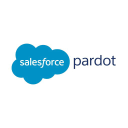On Building A User Feedback Tool And Growing To Over 200 Clients
Hi! My name is Kees Wolters and I am one of the Co-Founders of Mopinion. Alongside two other founders, we started our company back in 2013 with the goal of helping companies better understand the needs and struggles of their customers on their digital channels such as web and mobile. To tackle this, we decided to develop user feedback software that would easily collect, analyze, and manage feedback - enabling companies to improve their digital channels.
With a background in digital marketing, it seemed really important to capture the Voice of the Customer. If you look at the eCommerce industry, for example, there is a lot of focus on the numbers, i.e. How many people ordered product X? How many visitors did we have today? How many customers dropped off in the ordering funnel? These are interesting numbers, but what these questions lack is an insight into WHY they did not order the product, or WHY the visitors left in this step of the ordering funnel.

When we started out, there was a lot of hype...

Download the report and join our email newsletter packed with business ideas and money-making opportunities, backed by real-life case studies.

Download the report and join our email newsletter packed with business ideas and money-making opportunities, backed by real-life case studies.

Download the report and join our email newsletter packed with business ideas and money-making opportunities, backed by real-life case studies.

Download the report and join our email newsletter packed with business ideas and money-making opportunities, backed by real-life case studies.

Download the report and join our email newsletter packed with business ideas and money-making opportunities, backed by real-life case studies.

Download the report and join our email newsletter packed with business ideas and money-making opportunities, backed by real-life case studies.

Download the report and join our email newsletter packed with business ideas and money-making opportunities, backed by real-life case studies.

Download the report and join our email newsletter packed with business ideas and money-making opportunities, backed by real-life case studies.



















